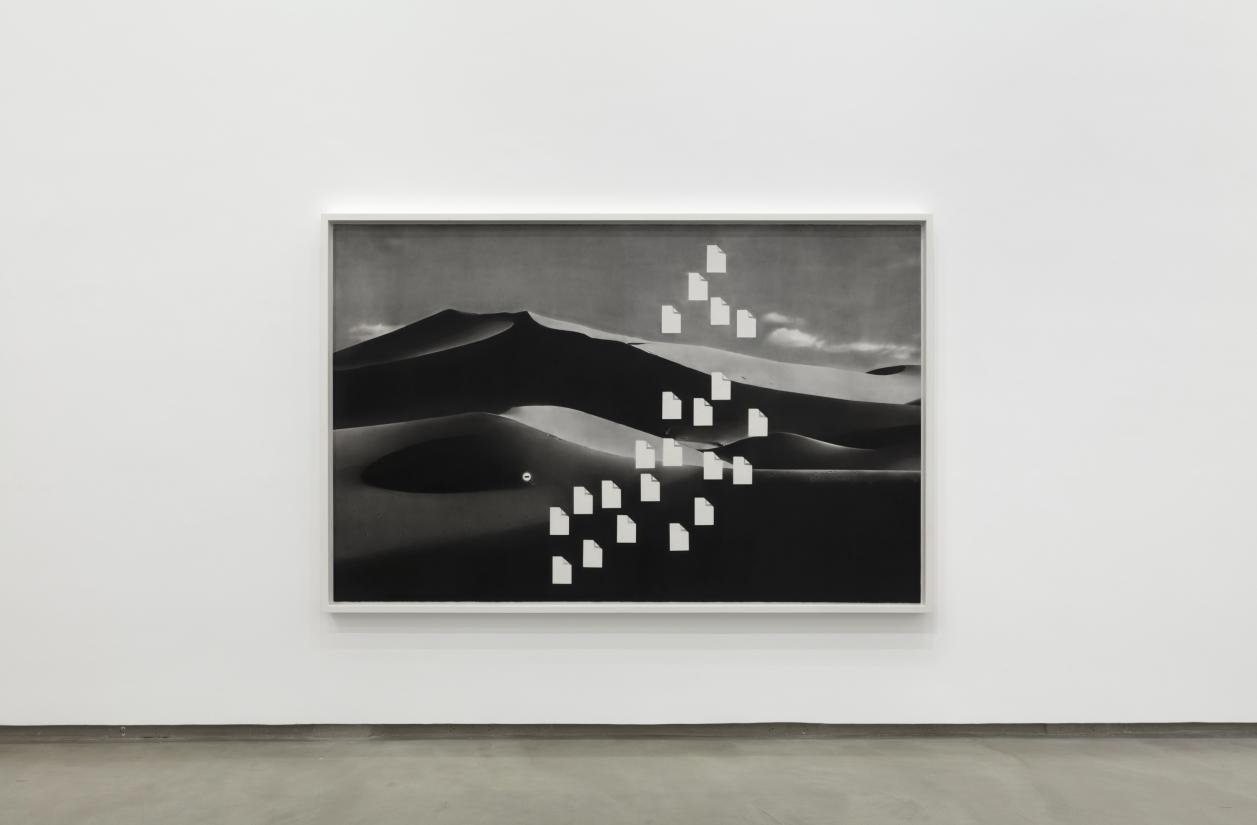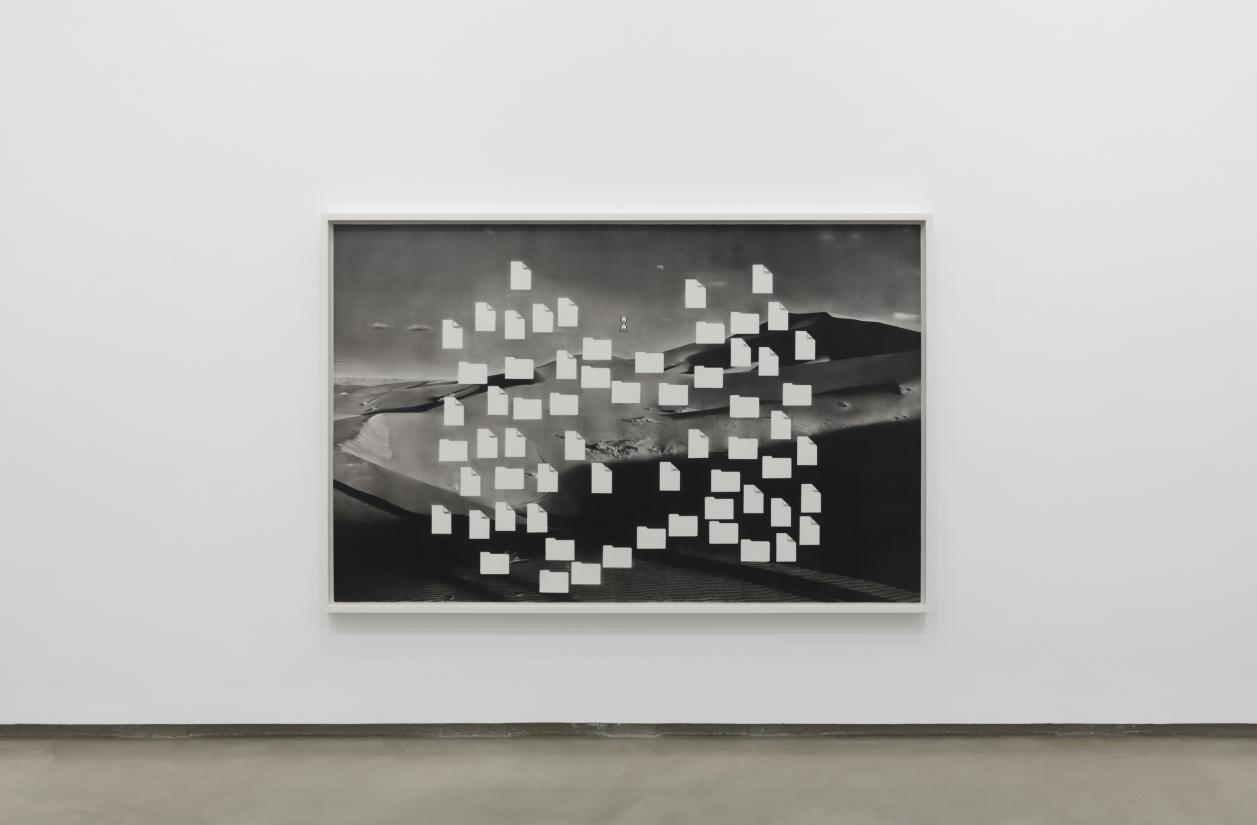Andreas Albrectsen’s practice is driven by a digitally inspired approach to analogue drawing. With inspiration from screen images, computer operating systems, search engines and social media, his art examines the loneliness that might be associated with our use of digital tools. With references to art history, Albrectsen further applies a historical perspective to these contemporary experiences.
With a donation from the New Carlsberg Foundation, two very large drawings by Albrectsen will now be included in the permanent collection of Brazil’s national gallery, Museu Nacional de Belas Artes.
The age of loneliness
Based on social media screen shots, which are practically outdated the moment they are saved, Albrectsen’s drawings offer critical and poetical commentary on the role of digital technology in both our outer and inner lives.
By translating pixels into pigments, Albrectsen conveys the concept of the Eromocene: a term that describes our digital age as the age of loneliness, as human beings are out of step with the pervasive technology in our world. This is an age and a state characterized by natural disasters, mass biodiversity loss and technology’s subjugation of biology. Through his art, Albrectsen explores the emotions related to these conditions.
Created during a residency in Brazil
Untitled (-) and Untitled (Folders IV), 2022, were both created during a residency in Brazil. During his stay here, the artist’s focus was on exploring what happens when nature is digitized.
Both drawings depict a desert landscape in a monochrome colour scale. At first glance, Untitled (-) and Untitled (Folders IV) each resemble a computer desktop with randomly organized blank files and empty folders. Like a computer whose hard disk has been erased, the landscape appears even more desolate in light of this ‘noisy’ absence of what was.
The pictures are not digital at all, however, but analogue, drawn by hand. And in fact, the files and folders are carefully organized to refer to principal works from European art history.
In Untitled (Folders IV), the composition evokes the image of the Renaissance painting The Ambassadors, 1533, by Hans Holbein the Younger, a popular still-life painter known for his symbolic ‘memento mori’ topics. Untitled (-) refers to another still life, Trompe l’oeil, 1668, by Cornelis Gijsbrecht, which shows a collection of letters and surgical instruments.
With these historical references to traditional European art, Albrectsen establishes a delicate connection between contemporary and historical symbolic landscapes. His work revolves around themes that connect digital and analogue, absent and prominent, time-bound and universal across the gulf of time.
Museu Nacional de Belas Artes
Brazil’s national museum of art was founded in 1937 based on a collection dating back to the royal Portuguese collection from the 19th century. With more than 20,000 pieces, the current collection has a wide historical and geographical span that includes works by prominent artists, such as Nicolas-Antoine Taunay, Rodolfo Bernardelli, Albrecht Dürer, Francisco Goya and Wassily Kandinsky, as well as a large collection of African art and a growing collection of contemporary art.
About Andreas Albrectsen
Andreas Albrectsen (b. 1986) is a Danish-Brazilian visual artist trained at the Gerrit Rietveld Academie and Malmö Art Academy. Albrectsen lives and works in Copenhagen.
Albrectsen’s art explores themes at the intersection of geography, digital technology and affect. His media are paper, charcoal, pastel and graphite. As Albrectsen translates his topics into the medium of paper, a new visual potency emerges: the context of the images is lost, and a new, evocative autonomy appears from the ashes of the original images.
Albrectsen has held solo exhibitions in several venues, including C. C. C Gallery in Copenhagen and Galeria Anita Schwartz in Rio de Janeiro. He has participated in group exhibitions at Nils Stærk, SMK – National Gallery of Denmark, Vejle Art Museum and ARoS in Denmark and at Stedelijk Museum, Malmö Konsthall, Skissernas Museum – Museum of Artistic Process and Public Art, Haus-N Athens and Minuseins abroad.




